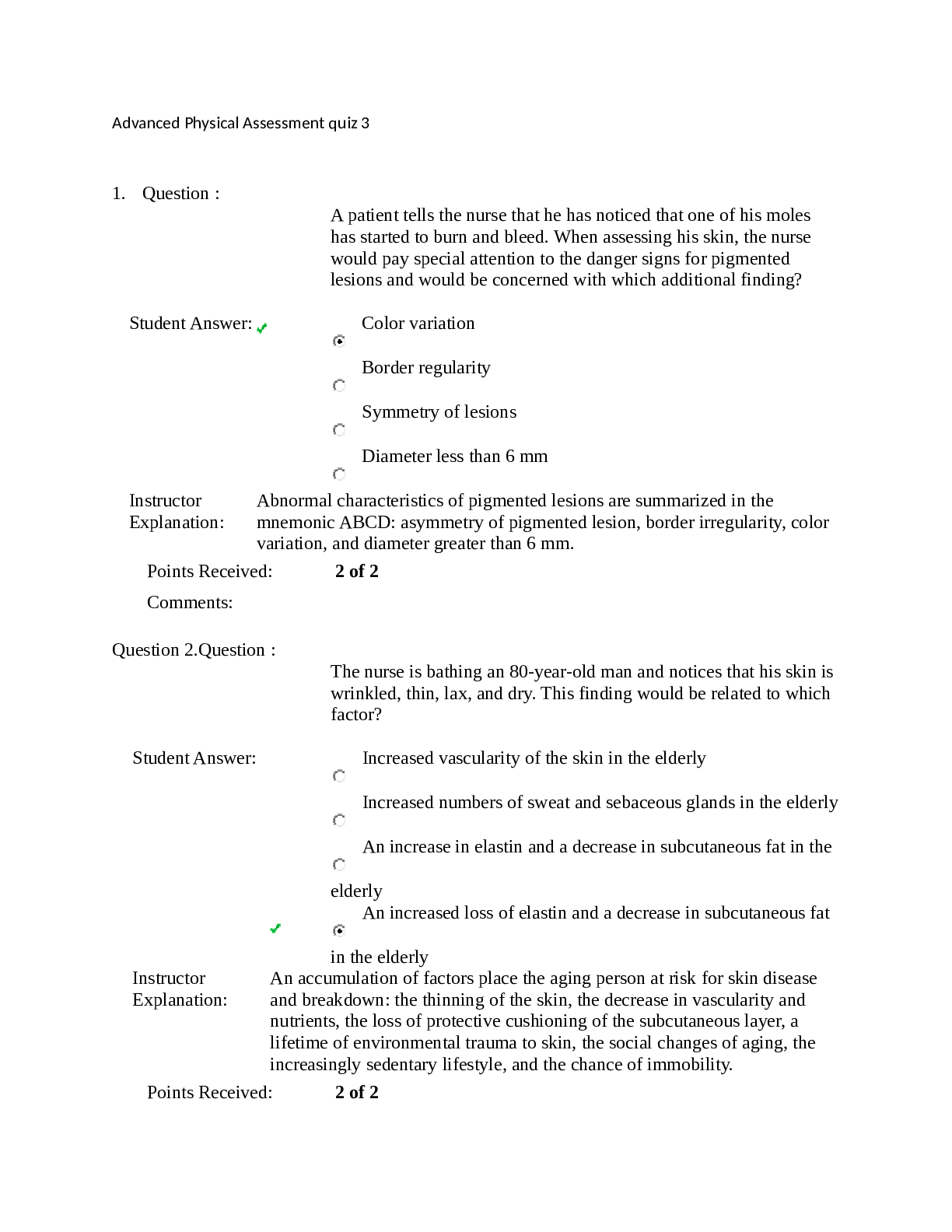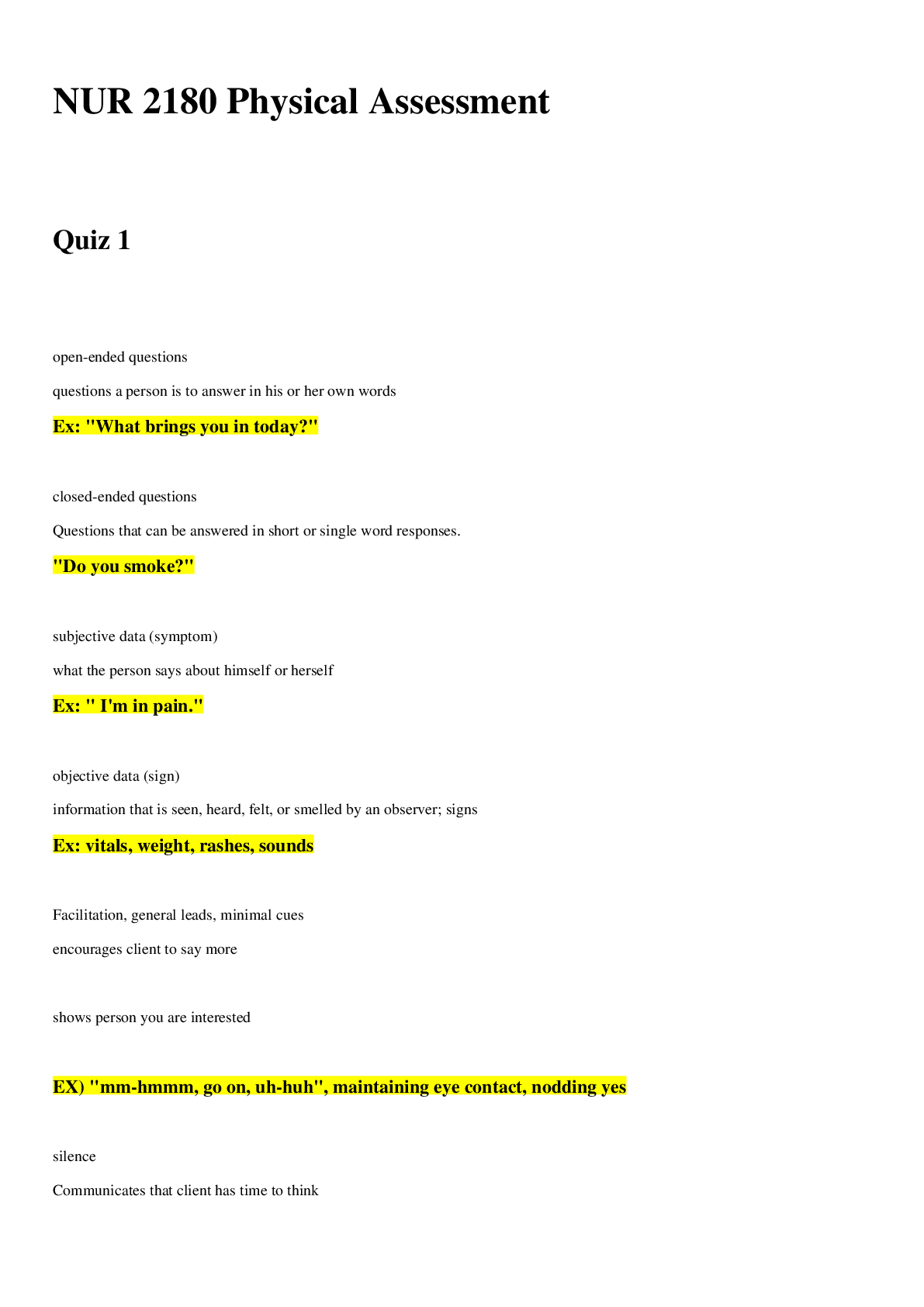*NURSING > EXAM > NR 509Advanced physical assessment quiz 4. latest document with questions and answers explained. 202 (All)
NR 509Advanced physical assessment quiz 4. latest document with questions and answers explained. 2020.
Document Content and Description Below
1. Question : During an examination, the patient states he is hearing a buzzing sound and says that it is “driving me crazy!” The nurse recognizes that this symptom indicates Student Answer: v... ertigo. pruritus. tinnitus. cholesteatoma. Instructor Explanation: Tinnitus is a sound that comes from within a person; it can be a ringing, crackling, or buzzing sound. It accompanies some hearing or ear disorders. Points Received: 2 of 2 Comments: Question 2.Question : A patient has been shown to have a sensorineural hearing loss. During the assessment, it would be important for the nurse to Student Answer: speak loudly so he can hear the questions. assess for middle ear infection as a possible cause. ask the patient what medications he is currently taking. look for the source of the obstruction in the external ear. Instructor Explanation: A simple increase in amplitude may not enable the person to understand words. Sensorineural hearing loss may be caused by presbycusis, which is a gradual nerve degeneration that occurs with aging and by ototoxic drugs, which affect the hair cells in the cochlea. Points Received: 2 of 2 Comments: Question 3.Question : The nurse is explaining to a patient that there are “shock absorbers” in his back to cushion the spine and to help it move. The nurse is referring to his Student Answer: vertebral column. nucleus pulposus. vertebral foramen. intervertebral disks. Instructor Explanation: Intervertebral disks are elastic fibrocartilaginous plates that cushion the spine like shock absorbers and help it move. The vertebral column is the spinal column itself. The nucleus pulposus is located in the center of each disk. The vertebral foramen is the channel, or opening, for the spinal cord in the vertebrae. Points Received: 2 of 2 Comments: Question 4.Question : The nurse educator is preparing an education module for the nursing staff on the epidermal layer of skin. Which of these statements would be included in the module? The epidermis is Student Answer: highly vascular. thick and tough. thin and nonstratified. replaced every 4 weeks. Instructor Explanation: The epidermis is thin yet tough, replaced every 4 weeks, avascular, and stratified into several zones. Points Received: 2 of 2 Comments: Question 5.Question : The nurse is examining a 6-month-old infant and places the infant’s feet flat on the table and flexes his knees up. The nurse notes that the right knee is significantly lower than the left. Which of these statements is true of this finding? Student Answer: This is a positive Allis sign and suggests hip dislocation. The infant probably has a dislocated patella on the right. This is a normal finding for the Allis test for an infant of this age. The infant should return to the clinic in 2 weeks to see if this has changed. Instructor Explanation: Finding one knee significantly lower than the other is a positive Allis sign and suggests hip dislocation. Normally, the tops of the knees are at the same elevation. The other statements are not correct. Points Received: 2 of 2 Comments: Question 6.Question : A patient drifts off to sleep when she is not being stimulated. The nurse can arouse her easily when calling her name, but she remains drowsy during the conversation. The best description of this patient’s level of consciousness would be Student Answer: lethargic. obtunded. stuporous. semialert. Instructor Explanation: Lethargic (or somnolent) is when the person is not fully alert, drifts off to sleep when not stimulated, and can be aroused when called by name in a normal voice but looks drowsy. He or she responds appropriately to questions or commands, but thinking seems slow and fuzzy. He or she is inattentive and loses train of thought. Spontaneous movements are decreased. See Table 5-3 for definitions of the other terms. Points Received: 2 of 2 Comments: Question 7.Question : A 65-year-old man is brought to the emergency department after he was found dazed and incoherent, alone in his apartment. He has an enlarged liver and is moderately dehydrated. When evaluating his serum albumin level, the nurse must keep in mind that Student Answer: serum albumin levels will increase as liver function decreases. serum albumin levels are a sensitive measure of early protein malnutrition. low serum albumin levels may be caused by reasons other than protein-calorie malnutrition. the results of the serum albumin measurement along with the patient’s hemoglobin level should be considered. Instructor Explanation: Low serum albumin levels may be caused by reasons other than protein-calorie malnutrition, such as an altered hydration status and decreased liver function. Points Received: 2 of 2 Comments: Question 8.Question : The nurse is checking the range of motion in a patient’s knee and knows that the knee is capable of which movement(s)? Student Answer: Flexion and extension Supination and pronation Circumduction Inversion and eversion Instructor Explanation: The knee is a hinge joint, permitting flexion and extension of the lower leg on a single plane. The knee is not capable of the other movements listed. Points Received: 2 of 2 Comments: Question 9.Question : A patient has been admitted after an accident at work. During the assessment, the patient is having trouble hearing and states, “I don’t know what the matter is. All of a sudden, I can’t hear you out of my left ear!” What should the nurse do next? Student Answer: Make note of this finding for report to the next shift. Prepare to remove cerumen from the patient’s ear. Notify the patient’s healthcare provider. Irrigate the ear with rubbing alcohol. Instructor Explanation: Any sudden loss of hearing in one or both ears that is not associated with an upper respiratory infection needs to be reported at once to the patient’s healthcare provider. Hearing loss associated with trauma is often sudden. It is not appropriate to irrigate the ear or remove cerumen at this time. Points Received: 2 of 2 [Show More]
Last updated: 1 year ago
Preview 1 out of 36 pages

Buy this document to get the full access instantly
Instant Download Access after purchase
Add to cartInstant download
We Accept:

Reviews( 0 )
$12.00
Document information
Connected school, study & course
About the document
Uploaded On
May 31, 2021
Number of pages
36
Written in
Additional information
This document has been written for:
Uploaded
May 31, 2021
Downloads
0
Views
65
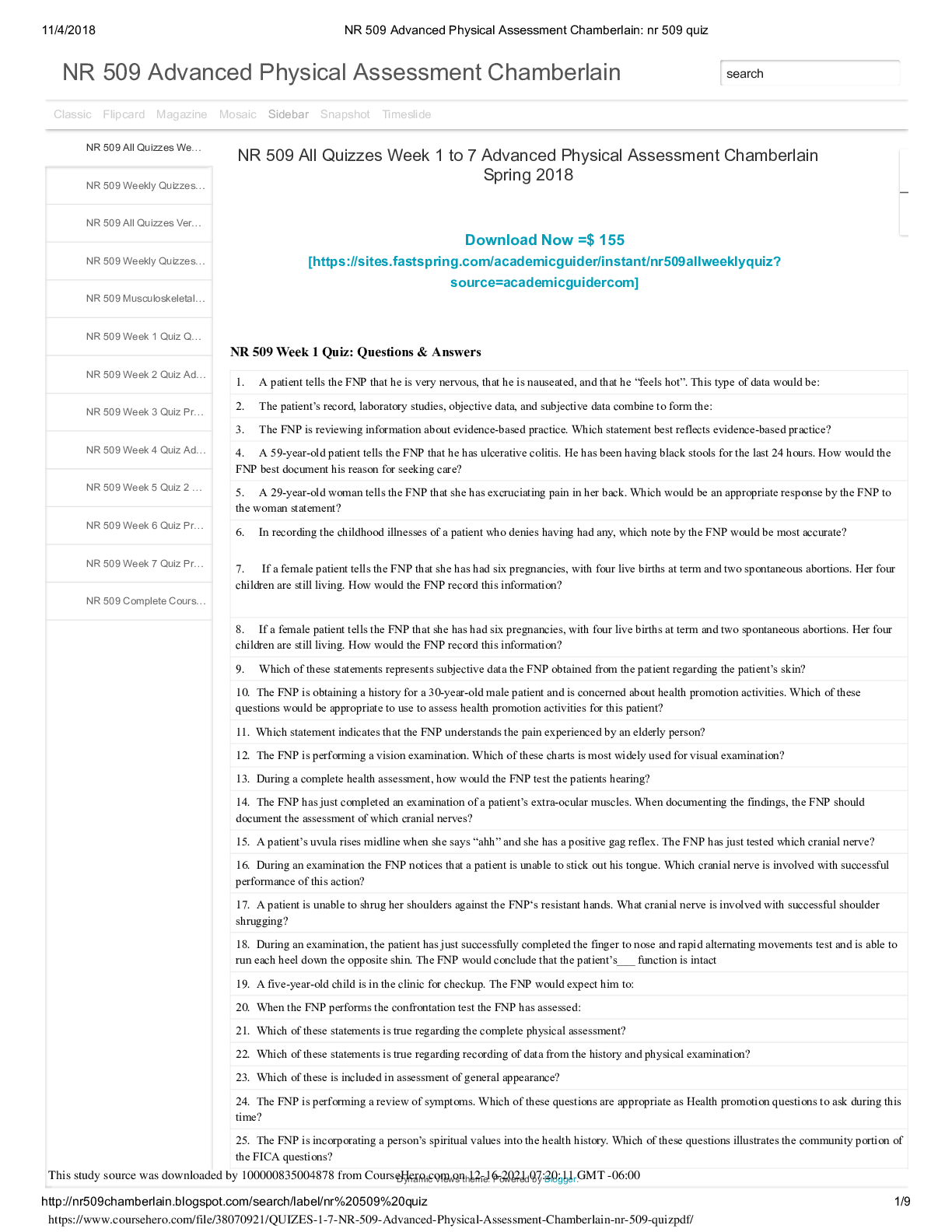

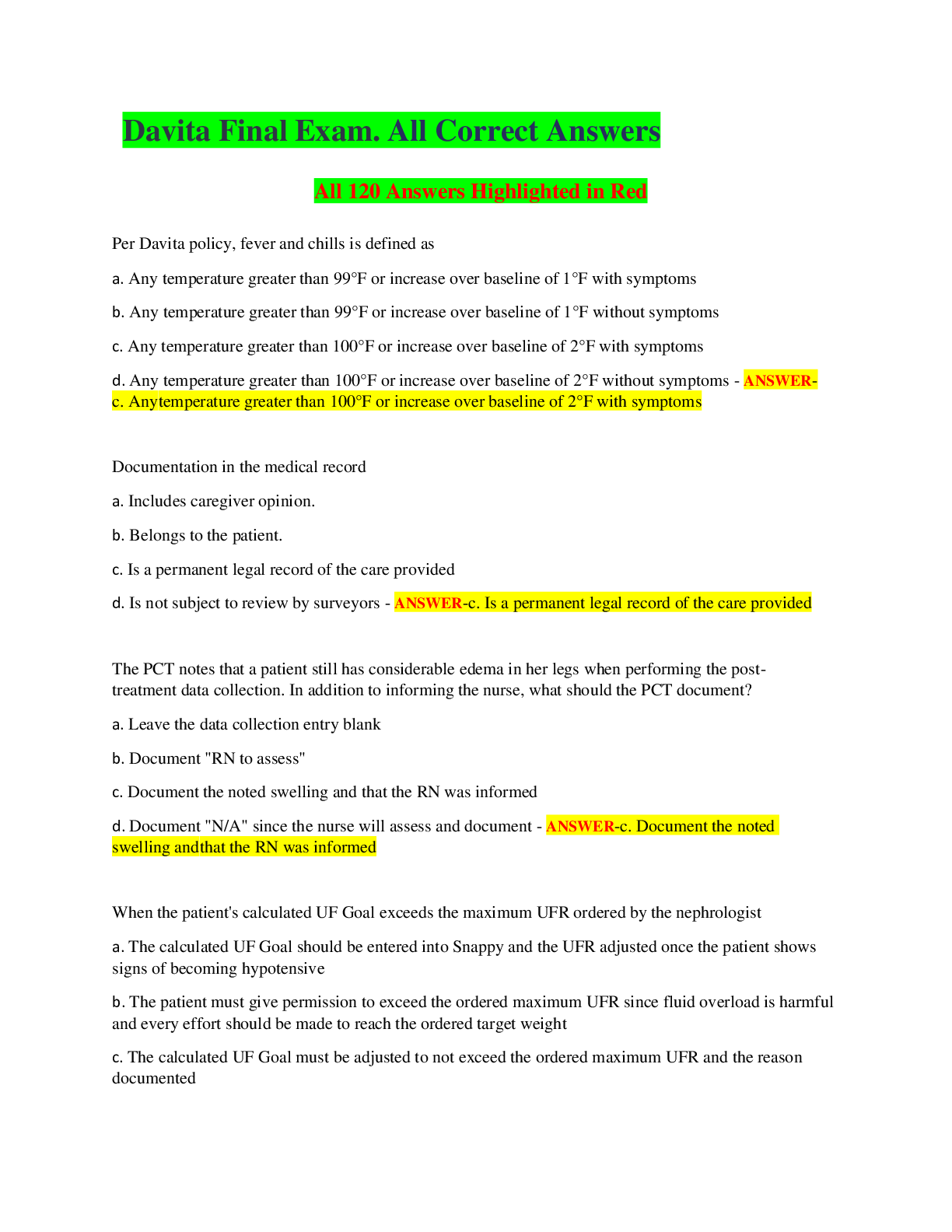
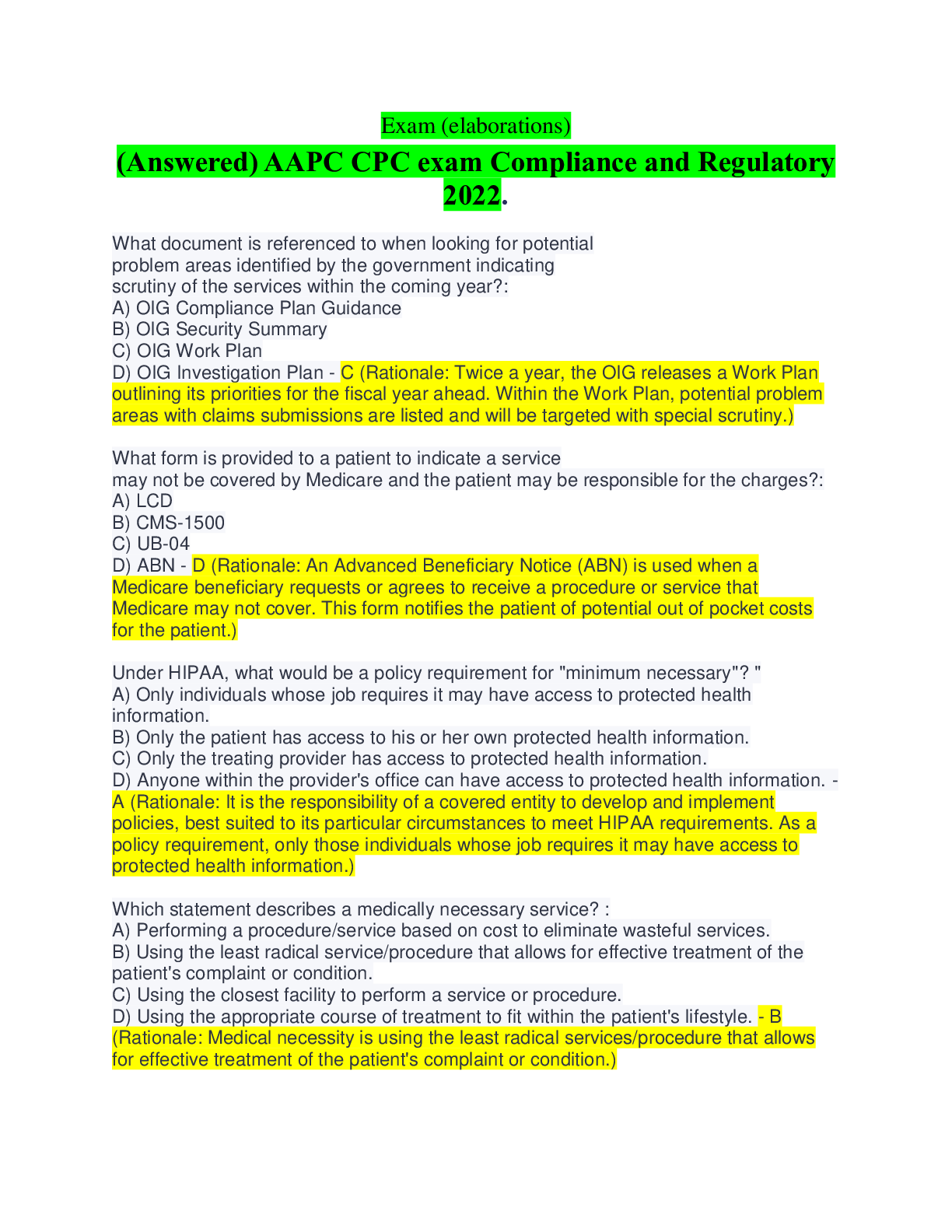


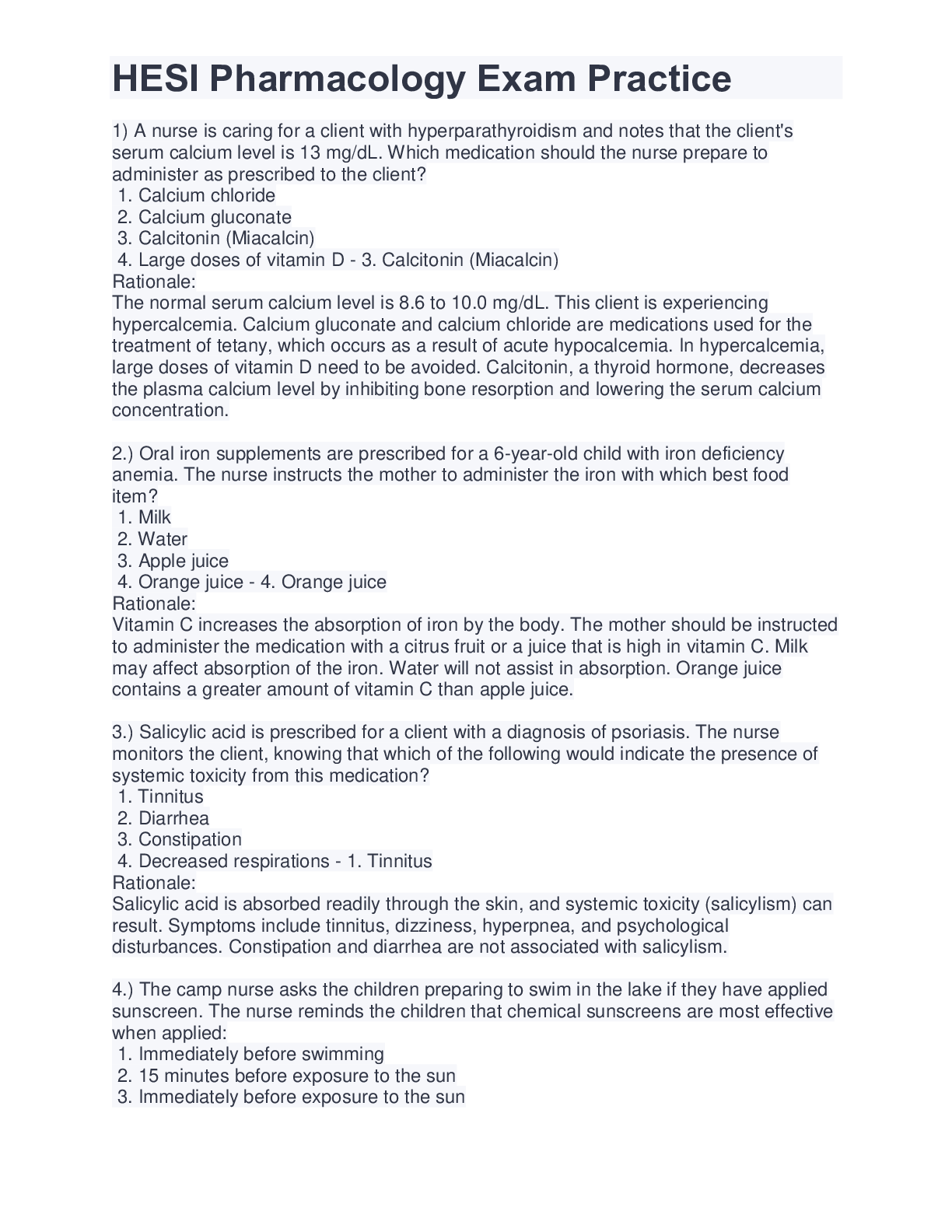
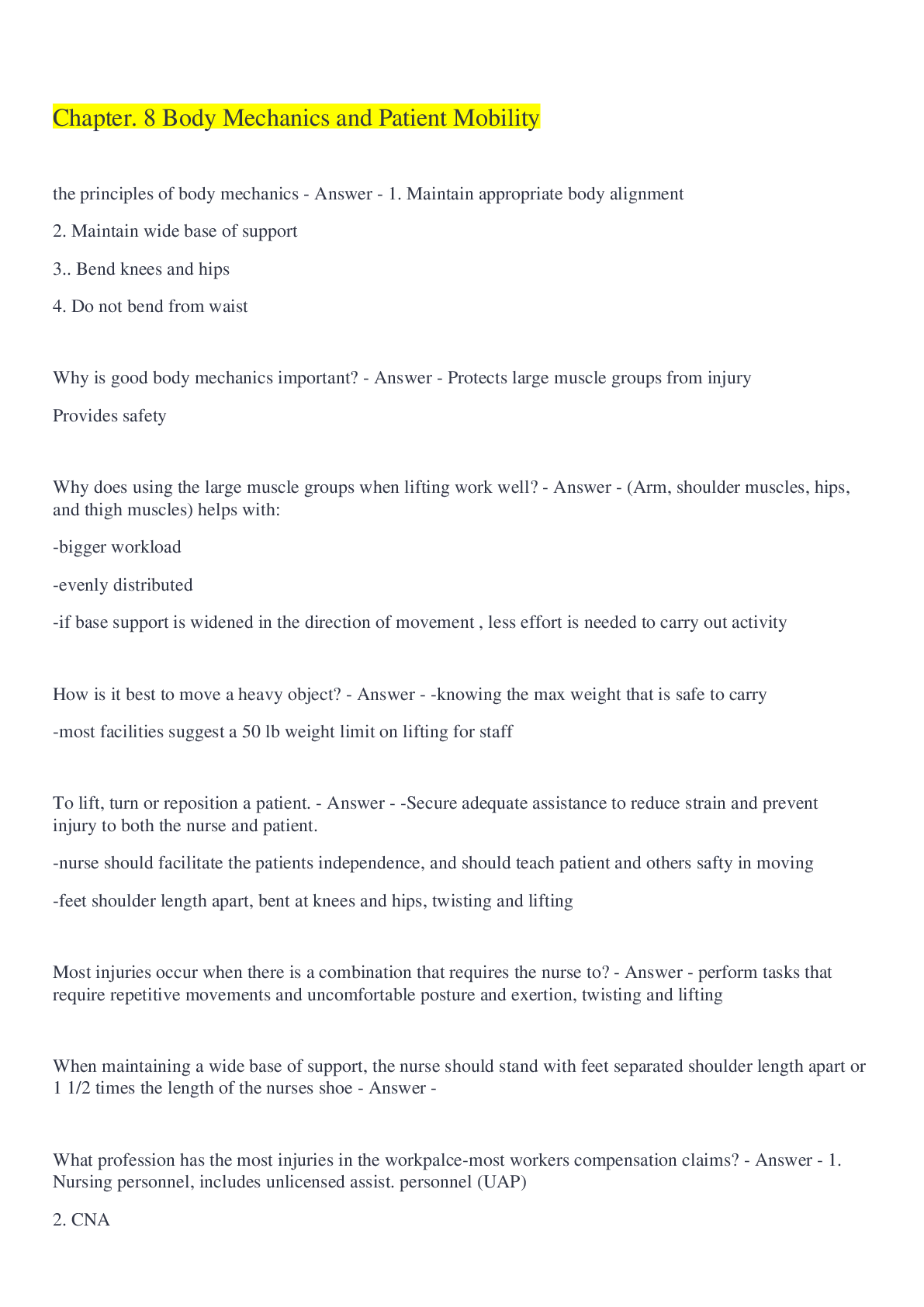
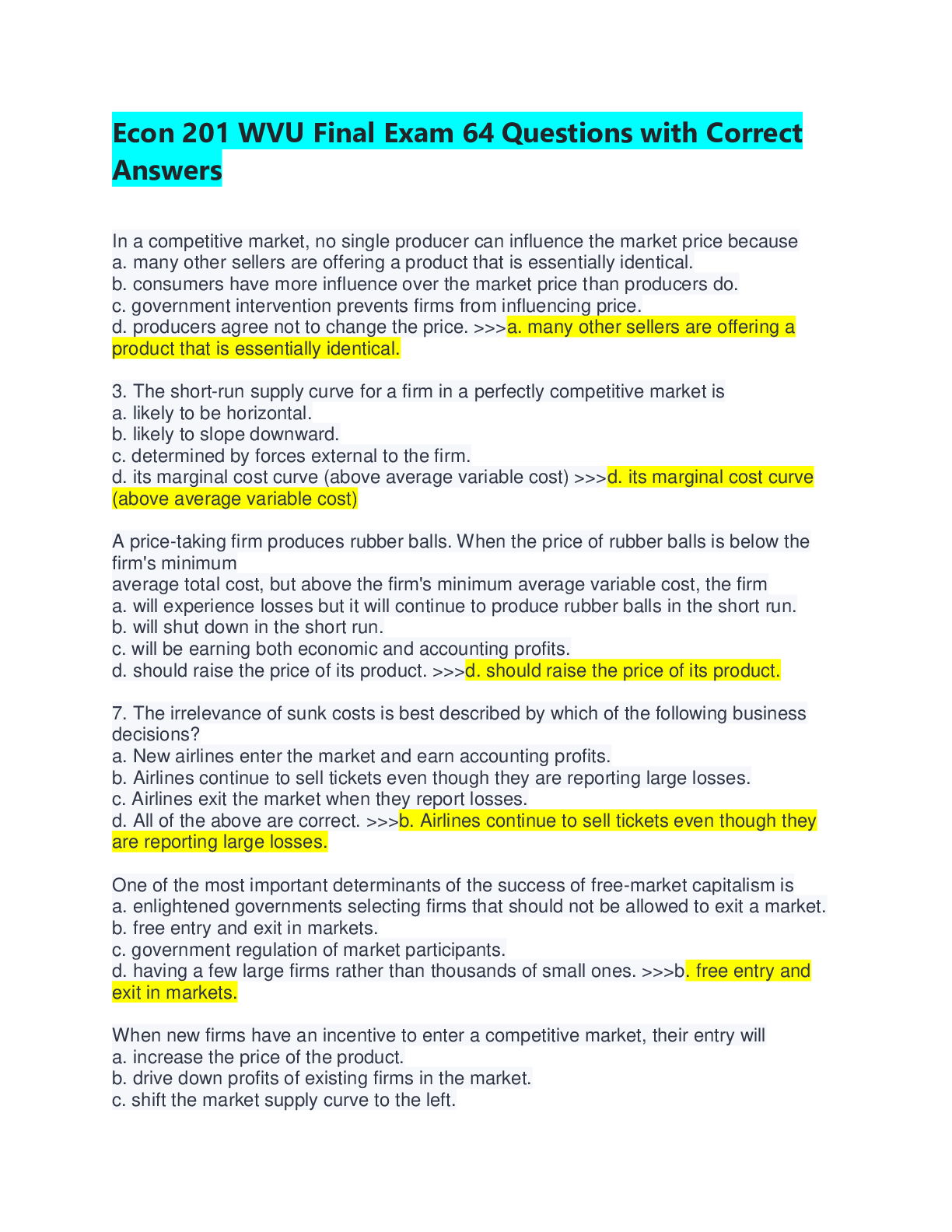



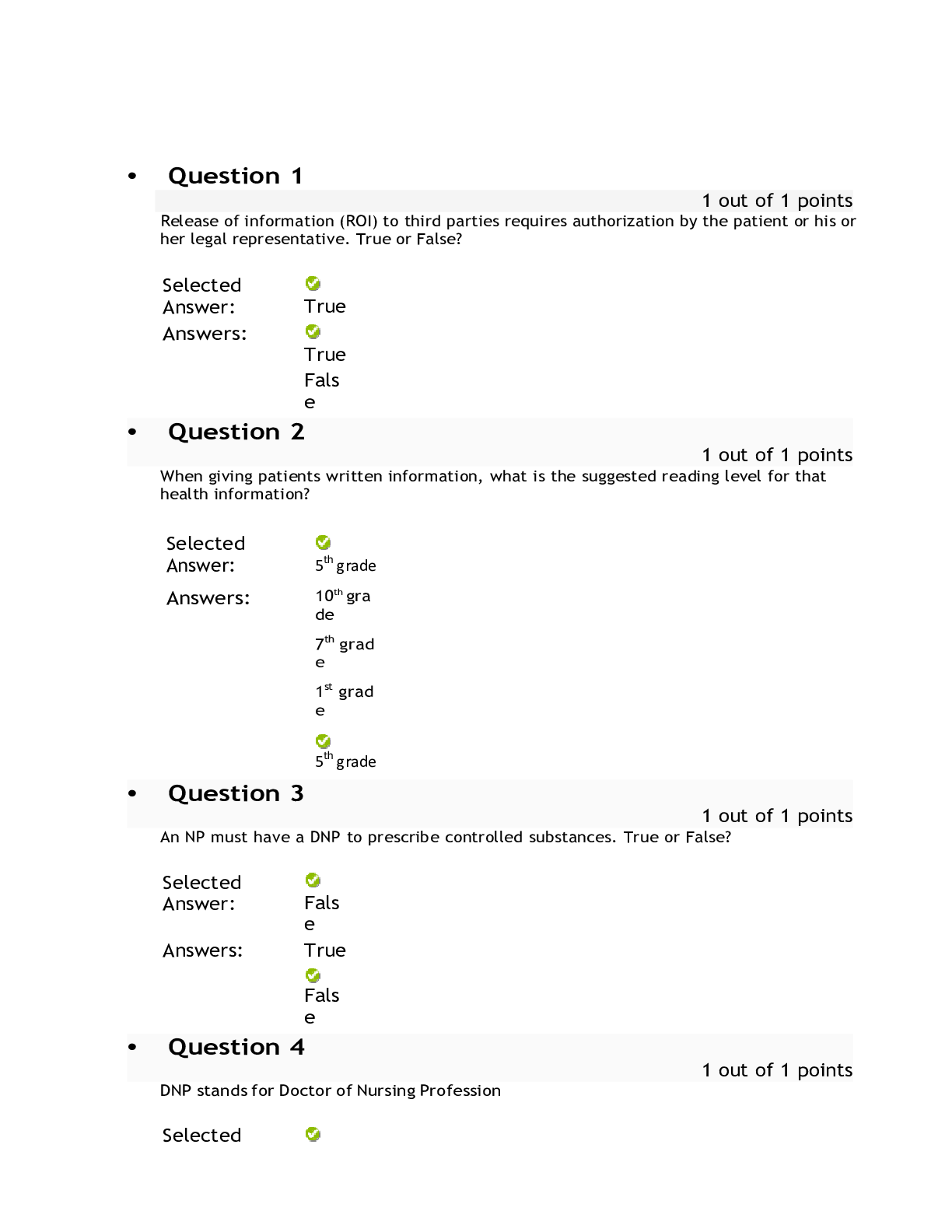
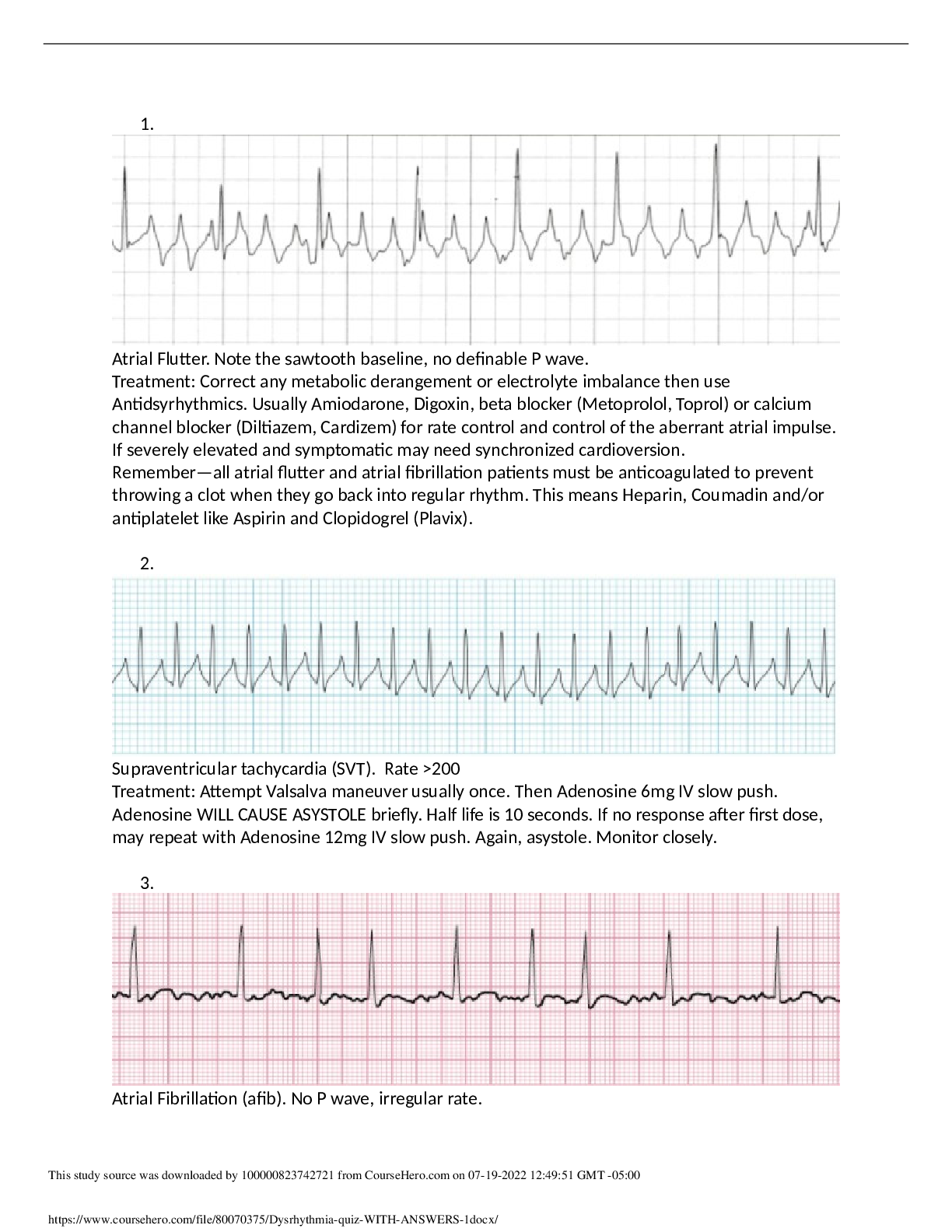
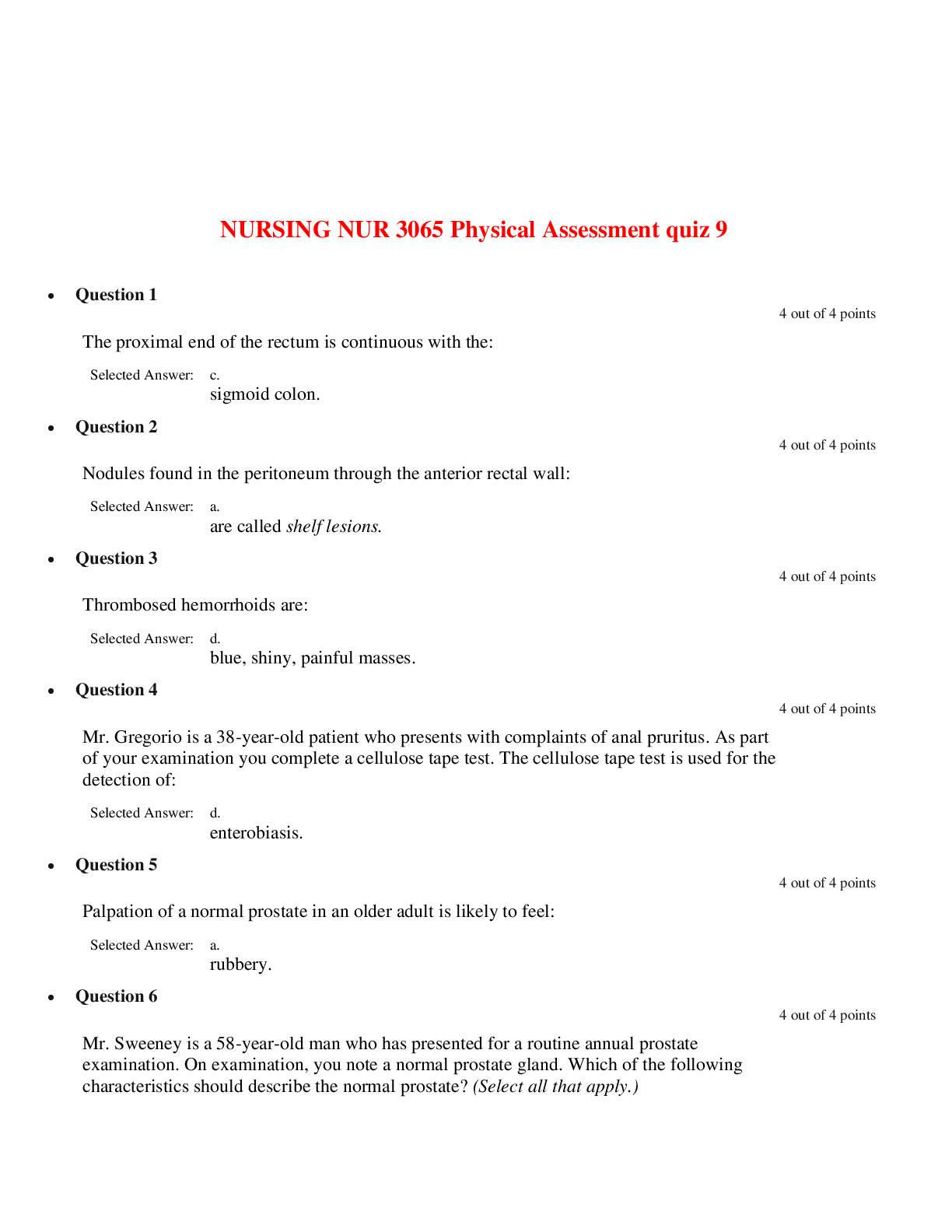
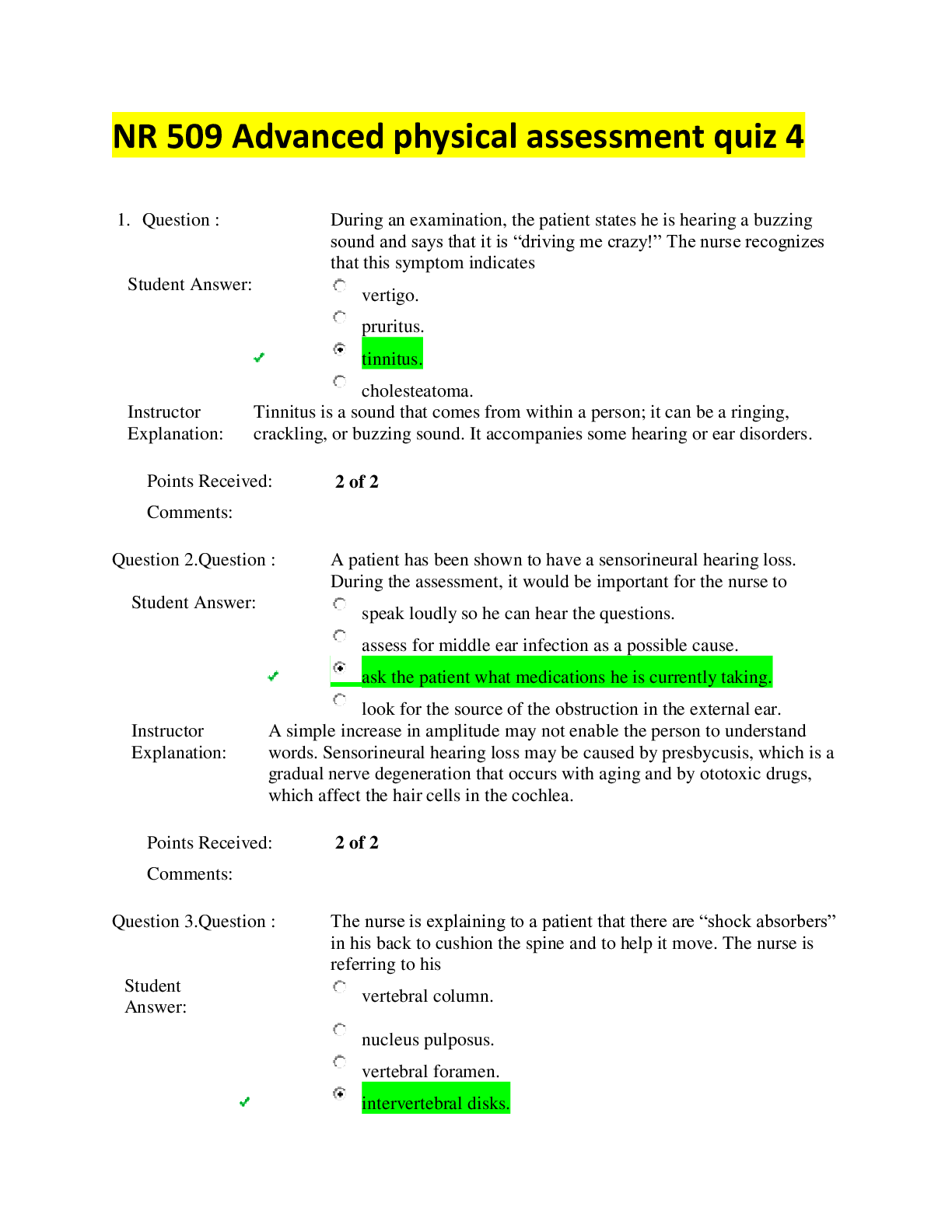
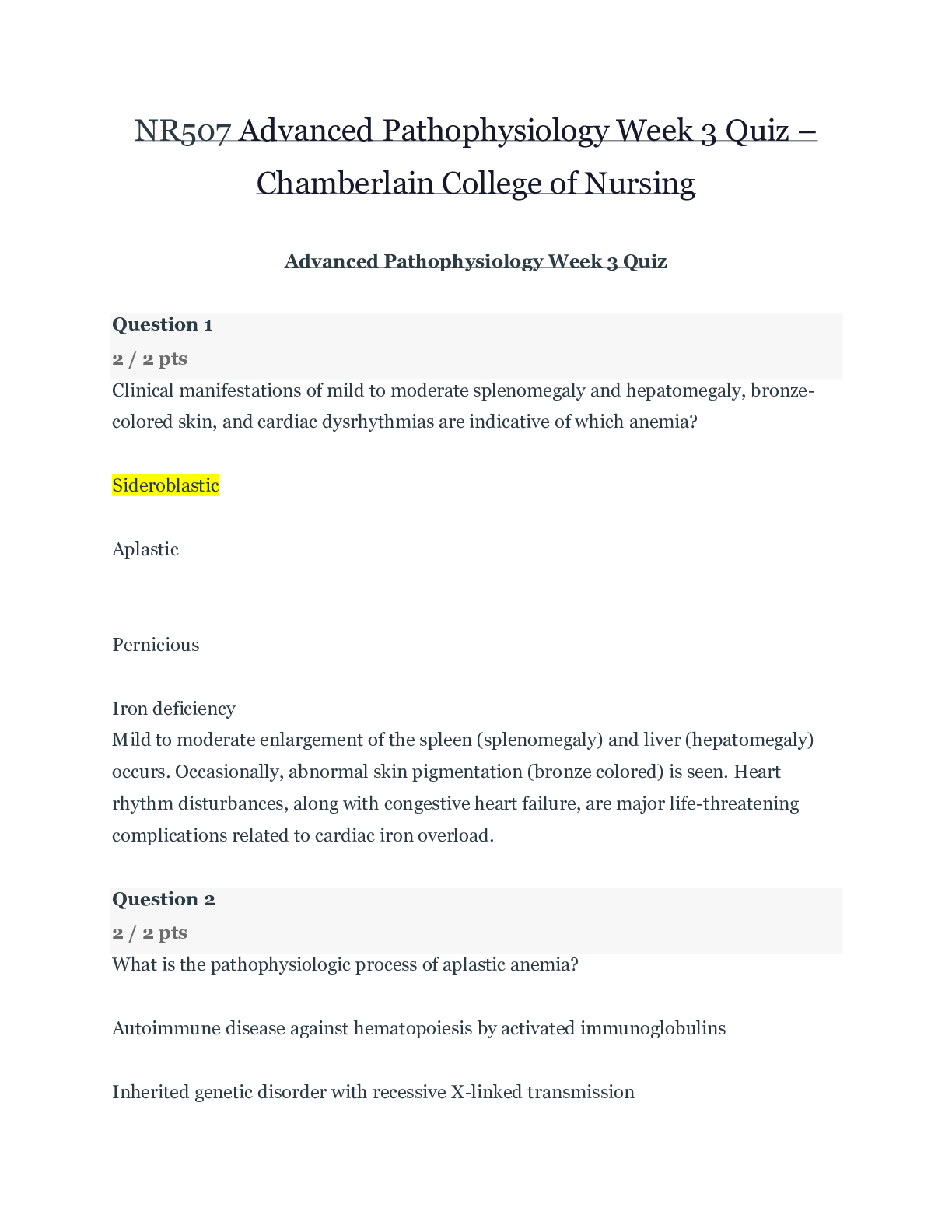
 – Chamberlain College of Nursing.png)
 – Chamberlain College of Nursing.png)
 – Chamberlain College of Nursing.png)
 – Chamberlain College of Nursing.png)
.png)

